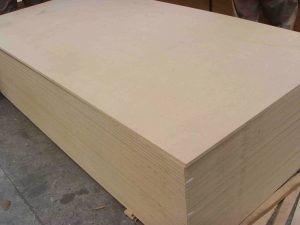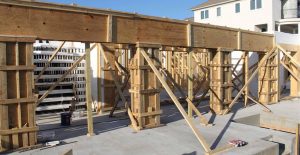Wood is just one of the four significant materials in the world. It has all-natural and beautiful structures, environmentally friendly, also non-toxic and harmless, Fire resistant plywood is commonly used in construction, furniture and other areas. However, because timber products are flammable, it is very easy to trigger fires and also even endanger people’s lives building safety and security, so it is essential to study the flame retardant properties of timber. Today I will introduce in detail just how flame-retardant plywoods are fireproof?
Timber Fire Retardancy Theory
Timber is a porous and complex natural organic material composed of cellulose, hemicellulose and lignin. It has a high web content of hydrocarbons and is a flammable material. Timber fire retardant is to improve the burning resistance of timber with physical or chemical methods, the purpose is to decrease the burning of wood and prevent the occurrence of fire accidents. The needs for wood timber flame retardancy are to minimize the burning speed of wood, reduce the speed of flame propagation, as well as accelerate the carbonization procedure of the burning surface area.
At present, the reliable flame retardant measure for wood plywoods is to add flame retardants, and the fire retardant concepts of flame retardants are approximately divided into covering theory, thermal concept, and non-combustible gas dilution theory. Treatment concept suggests that the flame retardant thaws at a temperature level less than that of timber to create a heat-insulating layer, which separates the timber from the flame and also prevents the flammable gas from escaping, thus playing the duty of fire retardancy. The thermal concept means that the flame resistant will absorb a large quantity of heat throughout the disintegration process, delaying the temperature rise of the timber, thereby inhibiting the fire of the wood. The theory of non-combustible gas dilution impact means that when the flame resistant is heated and disintegrated listed below the typical combustion temperature of wood, it will release non-combustible gas or water vapor, weaken the flammable gas created by thermal decomposition of timber, and also play the role of flame retardancy.
Fire resistant for plywoods
(1) Inorganic flame resistants. Electrodeless flame retardants mostly contain phosphorus, nitrogen, boron, light weight aluminum, and halogens. They have the advantages of large sources, low price, environmental protection and security, also have great flame retardant performance. They are currently the most commonly used flame retardants.
Borates such as boric acid and borax are the most common boron-based flame resistants. They are low-toxic to human beings and environmentally friendly, and borates can successfully reduce flame spread.
Amongst the phosphorus nitrogen flame retardants, inorganic phosphates such as ammonium polyphosphate and melamine phosphate are commonly used.
Metal hydroxide flame retardants do not produce poisonous as well as harsh gases during the flame retardant procedure. They are eco-friendly as well as environment-friendly fire resistants, mainly including aluminum hydroxide and also magnesium hydroxide.
( 2) Organic flame resistants. Because inorganic flame retardants have the shortcomings of solid hygroscopicity and poor loss, organic flame retardants can overcome the above problems. On this basis, scientists have studied organic fire resistants, mainly including natural phosphorus nitrogen, organic phosphorus boron etc. There is additionally research on resin-type organic flame resistants utilizing formaldehyde, urea, sodium hydroxide, dicyandiamide, ammonium dihydrogen phosphate as raw materials and so on . Nonetheless, natural flaME resistants have disadvantages such as high production price and unpredictable performance, as well as there are not as several inorganic flame retardants in functional applications.
Flame Resistant Treatment Technology For Plywoods
The flame resistant properties or commercial properties of wood panels are not only pertaining to the performance and dosage of flame retardants, but also very related to the distribution of fire resistants in timber. The flame-retardant treatment process of timber will influence the moisture absorption and flame-retardant properties of timber, and selecting an appropriate flame-retardant treatment procedure will certainly not ruin the physical and mechanical residential properties of wood.
( 1) Immersion method. The impregnation approach is a flame resistant treatment method that injects flame resistants into wood under the conditions of typical pressure, vacuum, pressurization or a combination of numerous stress.
The atmospheric impregnation approach is carried out under atmospheric pressure. The procedure is reasonably straightforward, reduced in price, and much less in tools financial investment, but it is only suitable for processing thinner products such as veneers or materials with much better permeability.
The pressure impregnation approach is to place the timber in a high-pressure storage tank, first evacuate the gas inside the timber, suck the flame retardant by means of vacuuming, and then press the fire resistant into the wood.
The fractional impregnation method is to impregnate different flame resistants separately, to make sure that the front and back treatment agents react with each other to produce precipitation. The timber impregnated by this technique can raise in weight by greater than 20% after drying, and also the wood will certainly become ceramic after drying, flame retardancy, hardness, dimensional stability and so on are significantly improved.
( 2) Splashing method. For wood that is inconvenient to impregnate, brushing or spraying flame retardants can be made use of to separate the warmth resource and prevent the timber from contacting to the air, thereby reducing the burning performance of the wood.
( 3) hot pushing method. The hot pressing method is to sprinkle the flame retardant powder on the board or paint it on the wood board, make it thaw and penetrate into the wood board under the condition of hot pressing. This technique avoids clear of the expansion of the timber board surface area and the Dried out after treatment, the disadvantage is that it is difficult to apply a sufficient dose.
Summarize:
As people’s requirements for furniture wood panel products are getting higher and higher, the flame retardancy of timber panels has actually been paid attention to. At present, making use of wood not natural phosphorus-nitrogen-boron fire resistants is still the mainstream technique of wood flame retardancy. Enterprises ought to vigorously develop green and environment-friendly flame resistants while improving the flame retardancy of wood.



